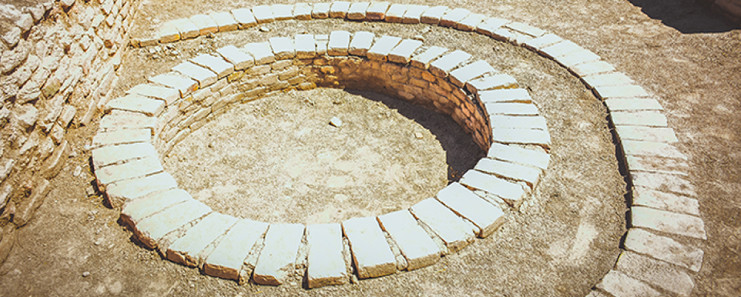Amazing facts about India
The common belief is that the world did not have a structured drainage system until 1800 CE. However, there’s another story in the archaeological Indus Valley sites of the Sindhu Saraswati basin in the North-Western part of India. The Mohenjo Daro and Harappa civilizations were discovered in 1800s and subsequently, 2,600 other sites. With their findings, the western world acknowledged that 5,000 years ago, ancient India had high levels of sophistication in town planning and civil engineering. Ancient Indian architecture and engineering revealed superior thinking and planning.
One of the most interesting aspects of these sites was their excellent drainage system. These cities had a systematic mechanism for rubbish collection and waste disposal. Moreover, every house of these cities had a private bathroom. This was seen in a thousand other excavation sites across the land.
Engineers of today admire the sewage system design in the 5,000-year-old historical sites of India. It draws the admiration of our modern engineers for its holistic plan, design and attention to the minutest details. Ancient Indian architecture with its meticulously planned cities with sewage systems have not been seen anywhere in the world, until the dawn of the modern era.

Rich in trade & wealth
“The knowledge I have acquired of Bengal in two visits inclines me to believe that it is richer than Egypt. From Rajmahal to the sea is an endless number of canals, cut in bygone ages from the Ganges by immense labor for navigation and irrigation.”
- Francois Bernier, who visited Bengal between 1656 and 1668 CE and wrote the book ‘Travels in the Mogul Empire’.
The 5,000-year-old texts - the Veda, Ramayana, Mahabharata, and other Puranas consistently speak of India as a land of prosperity.
The Vedic literature does not speak from the perspective of a poverty-ridden society. The examples in Vedic literature clearly indicate an advanced state of architecture, agriculture, metallurgy, trade, welfare, and defence.

For example, there are mentions of systematic strengthening of river embankments and development of irrigation canals from the rivers in connection with agriculture.
The Maitrayani Sukta of the Rig Veda, in 3.33.3 and 4, discusses river water flow and how to irrigate fields with the same. Verse 1.38.11 of the same Sukta, discusses the building of strong river embankments.
The Kshetrapati Sukta of the Rig Veda also speaks of the same while the Aranyani Sukta of the Rig Veda elaborates the laying of good roads.
“Millions of precious gems,
Millions of gold coins,
Millions of miles of fertile country
Millions of amazing people.”
- Marco Polo, one of the earliest European travellers writes about India
If a civilization could harness waters, grow food in a controlled manner and could also travel over land and seas to trade, then it implies that it must have been fairly advanced in understanding the sciences, engineering, commerce, and society. Along with these, there were signs of well-developed arts and spirituality, which then implies a state of prosperity.
This indication of prosperity was not limited to the North-Western portion of India. The Tamil Sangam texts speak of the sanga nidhi, paduma nidhi, (nidhi denotes a measure of wealth), indicating a prosperous state of society.
The Adichanallur excavation sites near Kanyakumari have the oldest archaeological finds (around 2000 BCE). The discovery of copper mines dating to 1500 BCE points to a land rich in natural resources and people who had the intricate knowledge to mine it. Coupled with navigational prowess, this knowledge of technologies should have yielded wealth in appropriate forms for those times, clearly substantiating the literary information of the Sangam texts.
The material has been sourced from @bharathgyan. This research team, led by a passionate husband-wife duo - Dr. DK Hari and Dr. Hema Hari, unearth some of India’s untold stories and make them contemporary. You can click here to buy any of their books on Indian civilization.






































